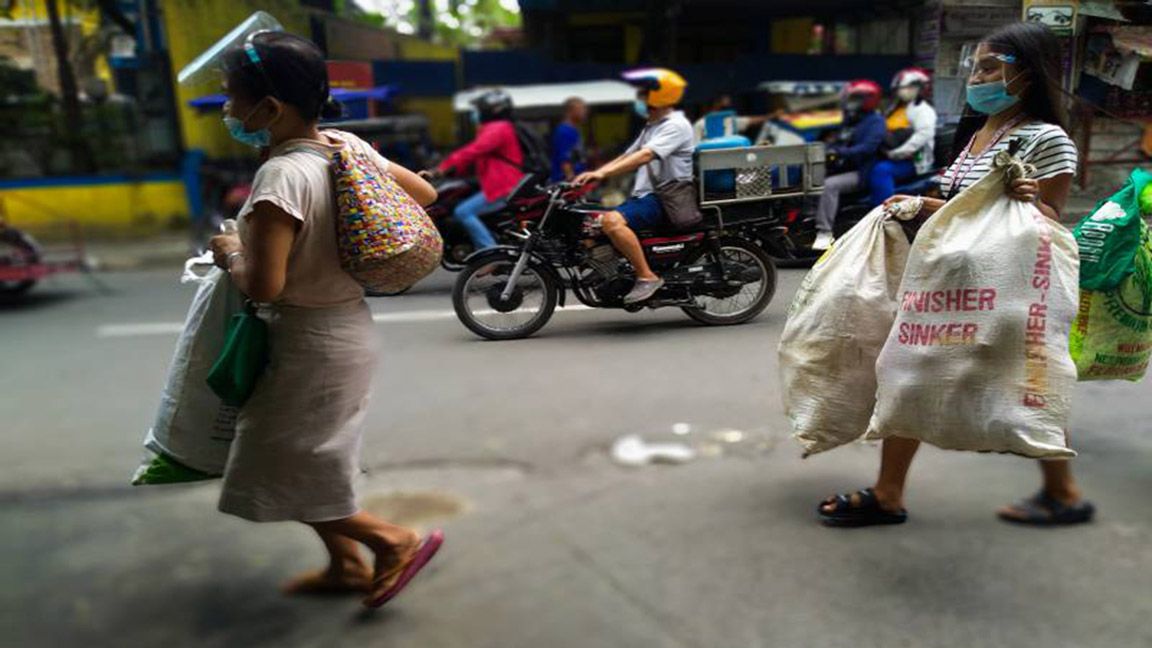The pandemic has worsened the food supply chains because of lockdowns that limited movement of supplies and people, thereby causing food insecurity to rise in the Philippines in 2020 to 46.1 million, of which 4.3 million Pinoys faced severe food insecurity, particularly in the urban poor areas, said a United Nations report.
In 2020, 4.3 million more Filipinos were severely food insecure or had no access to adequate food raising the total to 46.1 million compared to 44 million in 2019.
This despite the interventions being done by the government to provide food assistance (ayuda) to those who can least afford or can access existing sources.
A joint report of the UN Food and Agriculture Organization and the UN Children’s Fund called this as food insecurity as measured by the Food Insecurity Experience Scale which refers to limited access to food at the level of individuals or households because of lack of money or other resources.
The UN report entitled “2021 Asia and the Pacific Regional Overview of Food Security and Nutrition” stated that FAO provides estimates of food insecurity on two levels of severity: moderate or severe food insecurity and severe food insecurity.
“People affected by moderate food insecurity face uncertainties about their ability to obtain food and have been forced to reduce, at times during the year, the quality or quantity of food they consume due to lack of money or other resources,” BusinessMirror quoted the UN report.
“Severe food insecurity refers to situations when individuals have likely run out of food, experienced hunger and, at the most extreme, gone for days without eating. The prevalence of moderate or severe food insecurity is the combined prevalence of food insecurity at both severity levels.”
Of the 46.1-million food-insecure people in the Philippines, the UN report estimated that 4.3 million Filipinos experienced severe food insecurity last year, up from the 3.4 million recorded in 2019.
375M in Asia-Pacific
In Asia-Pacific, the report estimated that more than 375 million people in the region faced hunger in 2020, an increase of 54 million over the previous year.
Also, it noted that more than one billion people did not have access to adequate food in 2020, an increase of almost 150 million people in just one year.
Poverty and income inequality
“The high cost of a healthy diet, and persistently high levels of poverty and income inequality, continue to hold healthy diets out of reach for 1.8 billion people in the Asia and Pacific region,” FAO said.
The major contraction of economic activity in Asia-Pacific and the disruption in food supply chains caused by the Covid-19 pandemic exacerbated the food woes of the region.
Impact of the pandemic
Economists from the Asian Development Bank (ADB—Manisha Pradhananga, Matteo Lanzafame, and Irfan A. Qureshi–said in their blog that Covid-19 has “unsettled” food supply chains in Asia.
“In the initial days of the pandemic, uncertainty surrounding imminent lockdowns across the region led to panic buying, temporary shortages, and price spikes,” they said.
“Disruptions to domestic and international food supply chains—which emerged as rising health risks —led to major travel restrictions, undermined food availability and accessibility, in particular of perishable goods.”
The ADB economists also noted that the impact on food security has also been sharp within economies. “While the divide is clear across the income strata, new fault lines have emerged as well.”
Urban poor is worst affected
Urban centers, they said, have been more severely affected because of higher population density, a disproportionately larger share of Covid-19 cases and outbreaks, and stricter restrictions on movement.
“Among the worst affected have been the urban poor, who largely rely on insecure jobs in the informal sector and spend a substantial portion of their income on food.”
The economists said the pandemic has also intensified food insecurity for women and vulnerable groups.
The share of women affected by moderate or severe food insecurity was 10 percent higher than that of men in 2020, up from 6 percent in 2019.
“Together with a lower availability of nutritious food and disrupted health and nutrition services, income losses associated with the pandemic are projected to expose an additional 9.3 million children worldwide to wasting by 2022, 2.6 million to stunting, and 168,000 to death, and induce 2.1 million maternal anemia cases,” they said.
Resilient food systems
Food assistance and other social transfers will help protect the most vulnerable members of society, according to the economists. They noted that the Philippines, along with many Asian economies are already implementing food assistance programs.
Addressing food security challenges in the medium and long term requires resilient food systems, the economists said. “A proactive response is especially needed in the context of climate change and the expected rise in the frequency and scale of extreme weather events.”
Early warning systems
The economists urged governments in Asia to invest in early warning systems—based on advanced spatial information technology combined with detailed crop models, machine learning algorithms, ground data on agricultural production and management—as this can help farmers anticipate extreme weather events and plan accordingly.
They noted that Asia is home to 350 million smallholder farmers, who have access to limited resources, particularly in the face of adverse events. Estimates by FAO suggest that between 2008-2018 agriculture absorbed 63 percent of the damage and loss caused by climate-related disasters across all economic sectors in developing countries.
Alarmingly, between 2003 and 2013, six of the world’s 10 climate-related disasters most damaging to agriculture were in Asia. They include floods in agrarian economies such as Pakistan, which caused approximately $5.3 billion in agricultural damage and loss in 2010 and $1.9 billion in 2011.
Tags: #UNagencies, #FAO, #Unicef, #foodinsecurityin2020, #agriculture, #poverty, #foodsecurity
